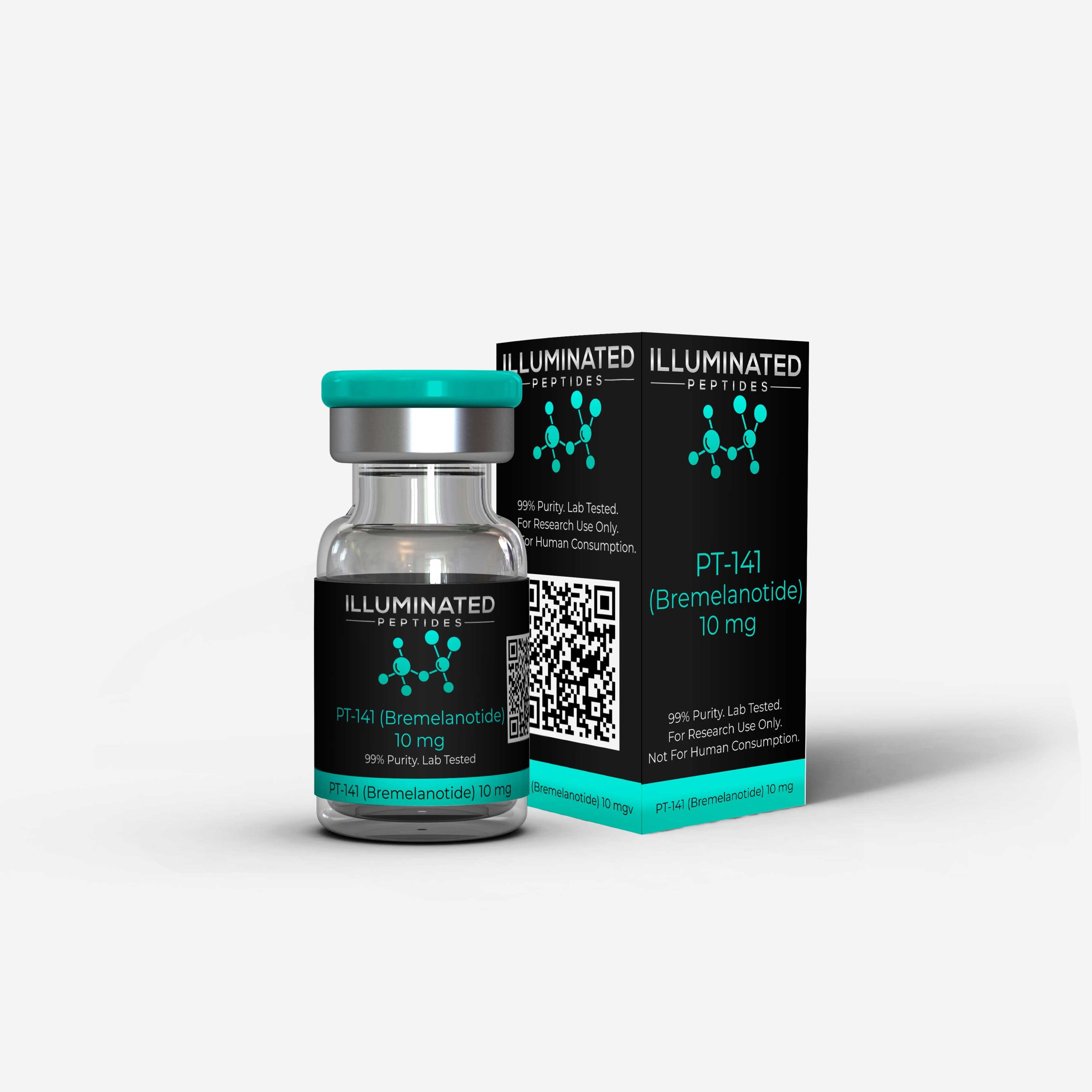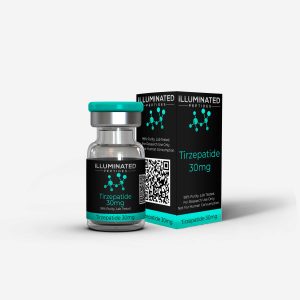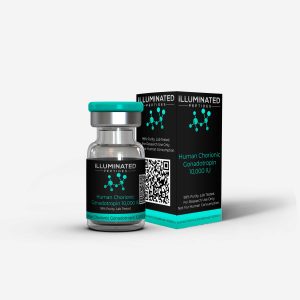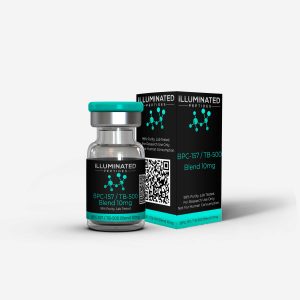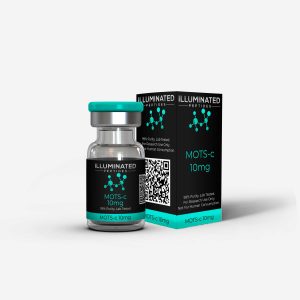Description
What is PT-141 ?
PT-141, also known as Bremelanotide, is a synthetic peptide originally derived from the hormone alpha-melanocyte-stimulating hormone (α-MSH). Unlike many compounds that act through the vascular system, PT-141 works by directly activating receptors in the brain linked to sexual function. Specifically, it is an agonist of the melanocortin-4 (MC4R) and melanocortin-1 (MC1R) receptors.
Research shows that PT-141 can influence sexual arousal pathways, and it has been investigated in clinical trials for hypoactive sexual desire disorder (HSDD) in both men and women. Beyond its sexual health focus, it has also been studied for potential roles in conditions like acute hemorrhage due to its receptor activity. Some studies also note immune-modulating effects, making it a peptide of broader scientific interest.
PT-141 Structure
Sequence:Ac-Nle-Asp(1)-His-D-Phe-Arg-Trp-Lys(1)
Molecular Formula: CHN14010
Molecular Weight: 1025.182 g/mol
PubChem CID: 9941379
CAS Number: 189691-06-3
PT-141 Research
PT-141 and Sexual Arousal
PT-141 is most widely recognized for its influence on sexual arousal pathways. Unlike agents that act on the vascular system to improve blood flow, PT-141 operates centrally by binding to melanocortin receptors in the brain, especially MC4R. These receptors are involved in regulating desire, motivation, and reward, making them a direct target for modulating sexual function.
Clinical research has shown that PT-141 may increase sexual desire and arousal in both men and women. In studies on hypoactive sexual desire disorder (HSDD), PT-141 demonstrated the ability to trigger central nervous system pathways that stimulate interest and responsiveness, independent of peripheral vascular effects.
What makes PT-141 unique is its mechanism of action compared to traditional treatments. While drugs such as PDE5 inhibitors rely on enhancing blood flow to achieve physical readiness, PT-141 acts at a neurological level to spark the initiation of desire itself. This distinction positions PT-141 as a different class of research compound for understanding sexual motivation.
Overall, the research on PT-141 underscores its potential importance in sexual health studies, providing insight into the neurochemical regulation of arousal and the possibility of addressing conditions where desire is reduced or absent.
PT-141 and Hemorrhage
Beyond sexual function, PT-141 has also been explored for its possible role in acute hemorrhage. Early investigations suggest that melanocortin receptor activation may influence vascular tone and protective responses during bleeding events, though this remains an experimental field requiring further validation.
PT-141 and Infection
Research into PT-141 has pointed to its ability to stimulate the immune system. Activation of melanocortin receptors can modulate inflammatory responses and enhance innate defense mechanisms. These findings suggest PT-141 may hold relevance in models of infection and immune regulation, though its exact applications remain under study.
PT-141 and Cancer
Some exploratory studies have proposed that PT-141 and related melanocortin analogs could influence tumor biology through receptor-mediated signaling. While preclinical evidence is limited, this line of research reflects an interest in how melanocortin pathways intersect with cell growth, immunity, and disease progression.
Research Directions
PT-141 has gained significant attention for its role in the study of sexual dysfunction, yet its potential extends far beyond this area. Research into melanocortin pathways highlights additional opportunities, particularly in metabolic and inflammatory conditions. For example, deficiencies or mutations in the MC4R receptor are linked to certain forms of early-onset obesity, accounting for an estimated 6% of cases. PT-141, as a melanocortin receptor agonist, provides a valuable research tool for investigating this mechanism and exploring possible pathways of intervention. Likewise, the MC1R receptor is involved in processes related to pain, inflammation, kidney function, and infection, making PT-141 a compound of interest for multiple fields of study.
In laboratory settings, PT-141 has demonstrated minimal side effects, low oral activity, and strong bioavailability when administered subcutaneously in mice. It is important to note that animal dosage findings do not directly scale to humans. PT-141 available from Peptide Sciences is offered strictly for educational and scientific research purposes only. This compound is not intended for human use or consumption, and purchase is restricted to qualified researchers and licensed institutions.

